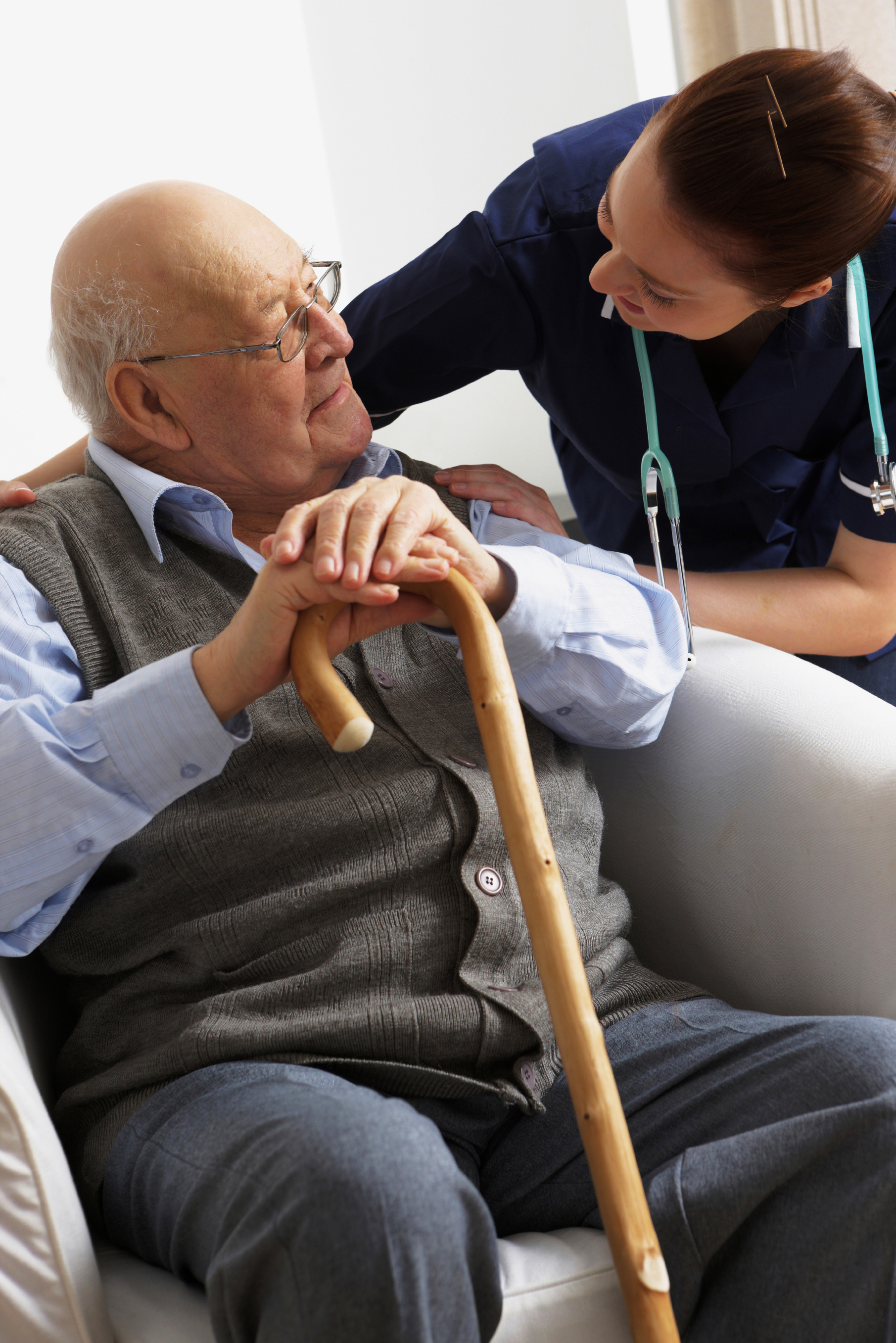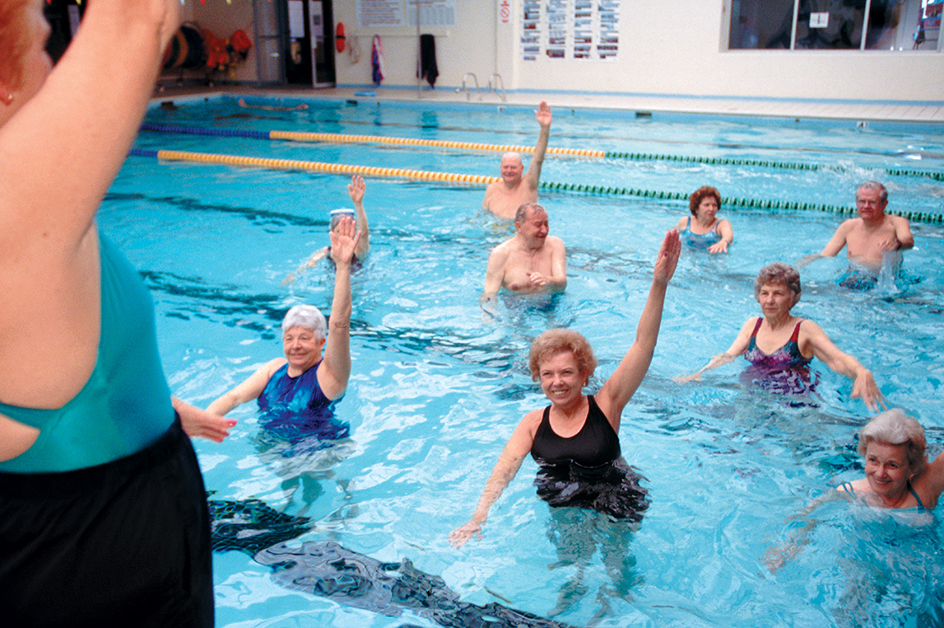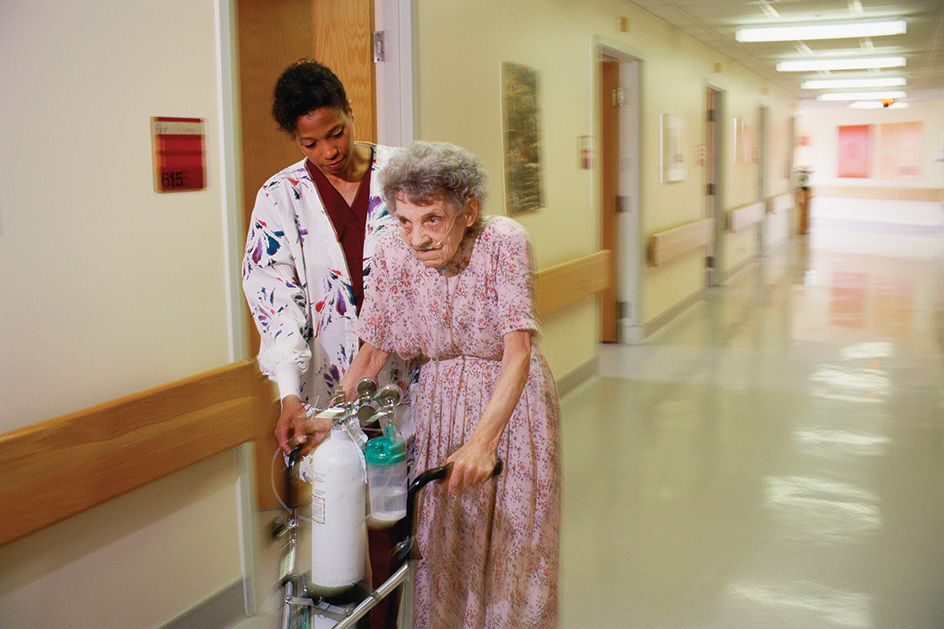Old age cannot be defined exactly because it does not have the same meaning in all societies. In many parts of the world, people are considered old because of certain changes in their activities or social roles. For example, people may be considered old when they become grandparents or when they begin to do less or different work. In the United States, people are often considered old if they have lived a certain number of years. Many Americans think of 65 as the beginning of old age because United States workers traditionally became eligible to retire with full Social Security benefits at age 65. People in the 65-and-over age group are often called senior citizens. Starting in 2003, the age of eligibility for full Social Security benefits began to increase gradually. It will reach age 67 in 2027.
Worldwide, the number of people 65 or older is increasing faster than ever before. Most of this increase is occurring in developing countries. In the United States, the percentage of people who are 65 and older increased from 4 percent in 1900 to about 16 percent in the late 2010’s. In 1900, only about 3 million of the nation’s people had reached 65. By 2019, the number of senior citizens had increased to about 53 million. Population experts estimate that about 72 million Americans—about 20 percent of the population—will be 65 or older in 2030. The number of elderly people is growing around the world chiefly because more children reach adulthood.
In most parts of the world, women live, on average, longer than men. In the United States in the late 2010’s, life expectancy at birth was 81 years for women and 76 years for men. American women who were age 65 in the late 2010’s could expect to live about 21 additional years. Men who were 65 could expect to live about 18 additional years.
The study of aging and old age is called gerontology. Many universities and colleges offer courses in gerontology for people who wish to provide services for the elderly. Geriatrics is the branch of medicine that deals with old age and its diseases. Most medical schools offer courses in geriatrics.

The rest of this article mainly discusses attitudes toward old age and tells about ways of life of the elderly in the United States. For information on the medical and physical aspects of old age, see the World Book articles on Aging and Geriatrics .
Attitudes toward old age
In all societies, old people are generally more respected if they control important resources, such as information, money, or land. In many countries, for example, the ability of the elderly to provide information based on their extensive experience gives them a respected position in society. This is particularly true in nonindustrial countries, which have few books or computers to store information. In modern industrial nations, however, many people do not regard the elderly as wiser or more knowledgeable. Also in industrial nations, where income from work is a major resource and where having a job earns a person respect, people may lose status when they retire.

Many beliefs about older people are untrue. Some employers, for example, think that younger workers are more efficient and reliable than older ones. But in many types of jobs, older people are better workers than younger people. The ideas that people become less intelligent as they age and that old people cannot learn new skills are also not true. Some researchers have called the many incorrect ideas about old people ageism.
Ways of life of the elderly
Older people in the United States follow many different ways of life. How a particular older person lives has much to do with how that person lived in earlier years. Important factors include the financial resources the person has accumulated, the interests the person has developed, and the relationships the person has established with other people.
Finances.
The most important source of income for many retired workers is Social Security. Workers and their employers pay equal shares of a payroll tax into the Social Security fund, which is administered by the federal government. After the workers retire, they receive a monthly payment from the fund. The amount of their payment is determined by the salary they earned and the number of years they worked. Widows and widowers continue to receive the pension after the death of their spouses. See Social security .
Some retired people also receive a pension from their employer or have their own savings. Most retired people receive less than half as much as they earned while working. But in many cases, their expenses are also lower.
Employment and other activities.
Most Americans over 65 do not have a job. About 23 percent of the men above this age and 17 percent of the women are employed. Under U.S. law, workers in most jobs cannot be forced to retire because of their age. But even when employers were still allowed to enforce a retirement age, most people stopped working for other reasons. Health and expected retirement income were, and still are, the chief factors in the decision to retire.
Some senior citizens join private groups for social and recreational activities. These groups include church organizations and senior citizens’ clubs. Some elderly people join AARP (formerly the American Association of Retired Persons) or similar organizations. These groups offer many services, including educational and travel programs, medical insurance, and newsletters. Such organizations also tell politicians about older people’s views on medical care, Social Security, and related issues. An organization called the Gray Panthers, whose members include both young and old, works to fight ageism in U.S. society.
The U.S. government provides several programs that enable senior citizens to help other people. For example, the Service Corps of Retired Executives (SCORE) attracts retired business people who enjoy advising community organizations and small businesses. The Foster Grandparent Program (FGP) uses seniors to help care for children. People over 60 may also join the Retired Senior Volunteer Program (RSVP) to work in hospitals, libraries, schools, and other institutions.
Older people seem to have a greater involvement in politics than do members of any other age group in the United States. A higher percentage of elderly people than other individuals vote in elections.
Housing.
Most Americans over 65 are closely involved with their families. However, only about one-tenth of all elderly Americans live with a relative other than their husband or wife. Many elderly parents and their children prefer the independence and privacy of living in separate dwellings. In other countries, the percentage of elderly parents who live with their children is much higher. In China, for example, about two-fifths of all elderly parents live with one of their children.
In the United States, only about 5 percent of the elderly live in a nursing home or other institution. Some of the nation’s senior citizens live in special housing called retirement communities. These communities may consist of apartment buildings, individual houses, or groups of mobile homes. In retirement communities, residents are guaranteed medical care for as long as they live.

Health care.
The federal government administers Medicare, a medical insurance program for senior citizens that pays part of their expenses for physicians and hospital care. Medicare also pays a portion of the cost of medical services at home or in a nursing home. However, medical expenses remain a serious problem for many older people and their families, especially if long-term care is needed because of a chronic illness. Finding ways for older people to receive high-quality, long-term care is a major problem facing American policymakers today. See Medicare .
